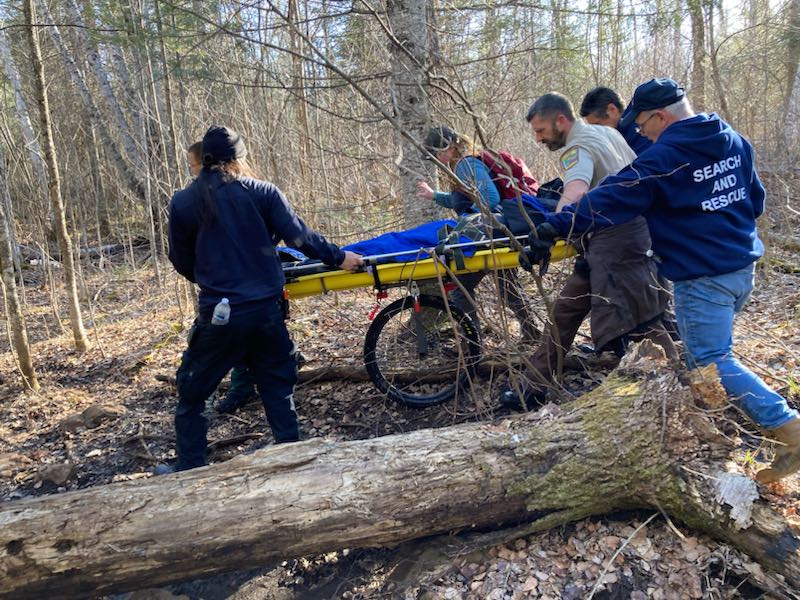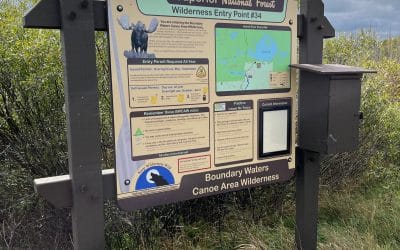An emergency call was placed to Cook County 911 at approximately 2 p.m. Tuesday reporting the injury near the top of Eagle Mountain. The Eagle Mountain Trail is a 3.5-mile hike to the summit. At 2,301 feet, it is the highest point in Minnesota.
The woman injured had indeed broken her ankle, according to Karla Pankow, the emergency medical services director at North Shore Health. A total of 14 people responded from a half-dozen agencies to help the woman down from Eagle Mountain. A stretcher with wheels like that of bicycle tire was used to help get the woman down to a waiting ambulance at the trailhead near a road commonly referred to as “The Grade.” The woman was taken by ambulance to North Shore Health hospital in Grand Marais. She was treated and released several hours later, according to Pankow.
“Solid teamwork, communication, endurance, and determination resulted in a positive outcome for all involved,” she said.
Responders from the North Shore Health first responder team, Cook County Sheriff’s Office, Cook County Emergency Dispatch, Cook County Search & Rescue, Minnesota DNR, Forest Service, and Lutsen First Responders were all involved in the rescue.
Eagle Mountain is a popular hiking destination throughout the spring, though particularly now that the trail is mostly snow-free following a mild winter. The trail is also busy in the summer and fall. In October 2021, 78-year-old Minnesota resident Harold Hanson needed to be rescued from Eagle Mountain after suffering a heart attack. The incident happened to coincide with a tornado that rolled across the Boundary Waters that afternoon.
Pankow told Paddle and Portage that with waterfalls flowing on the North Shore, and people starting to put canoes back on the water in the BWCA, it’s important to recreate with an abundance of caution at this time of year. Cold-water drownings are one of the leading causes of death in the BWCA, and the ice came off most lakes in the Boundary Waters region within the past week.
Listen below to an interview with Pankow and Paddle and Portage’s Joe Friedrichs about this topic and to learn more about the rescue on April 23 from Eagle Mountain.
Other Recent Articles
MPR Reporter Wins Prestigious Awards For ‘Wild Ice’ Story Near the Boundary Waters
From left, Kjersti Vick, John Oberholtzer, Dan Kraker, and Ian Andrus on a frozen lake near the Boundary Waters. Photo by Derek Montgomery for MPR News, shared with Paddle and PortageDan Kraker is a reporter for Minnesota Public Radio based in Duluth. He frequently...
Duluth Man Died in His Favorite Place: The Boundary Waters
Mark Ham paddles in the BWCA. In this photo, Mark is wearing an NRS Zephyr PFD. Submitted imageDULUTH – He didn’t have enough stubble. That’s one of the first observations that Will Ham and his mother, Cathie, made when they saw their father and husband, respectively,...
Opinions Vary for BWCA Management as Public Input Phase Wraps Up
Photo courtesy of Superior National Forest The U.S. Forest Service continues to gather input from the public regarding management of the Boundary Waters Canoe Area Wilderness. This initial phase of “we want to hear from you” started March 29 and ends today (May...




